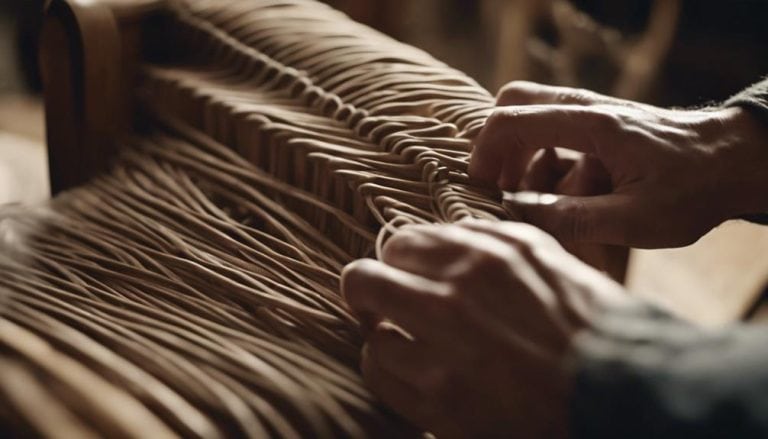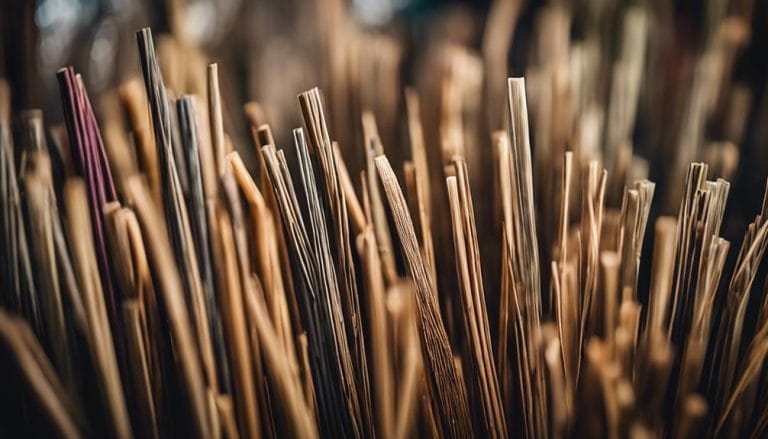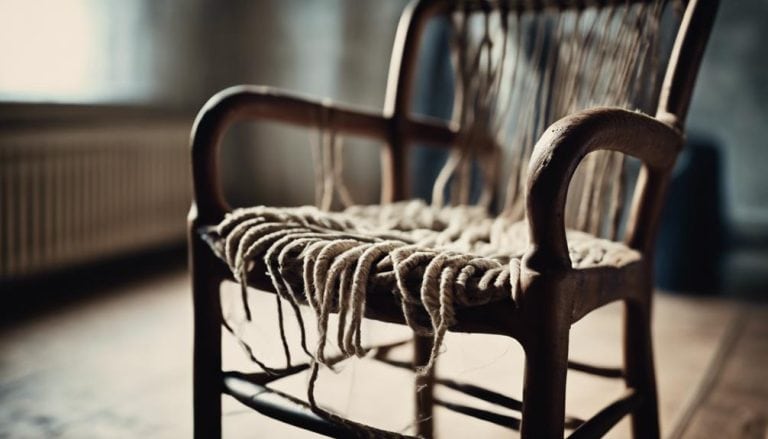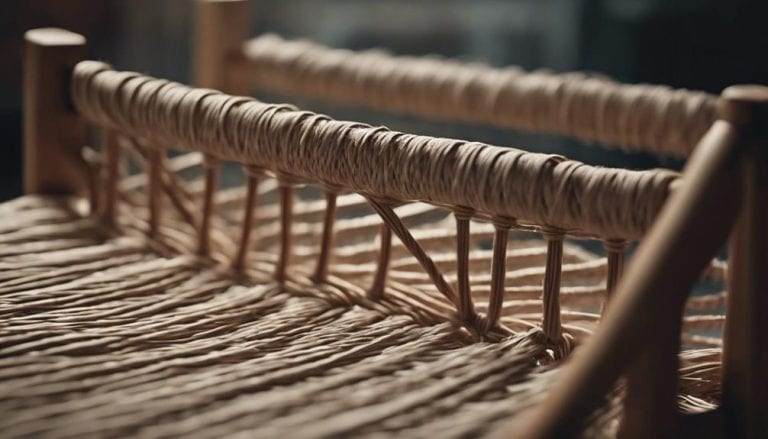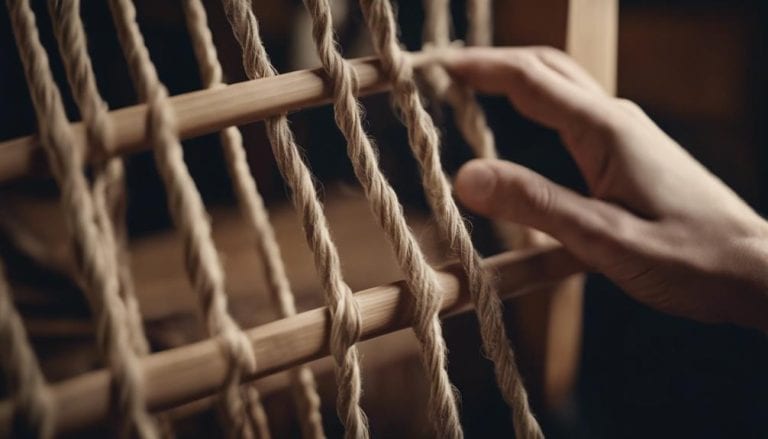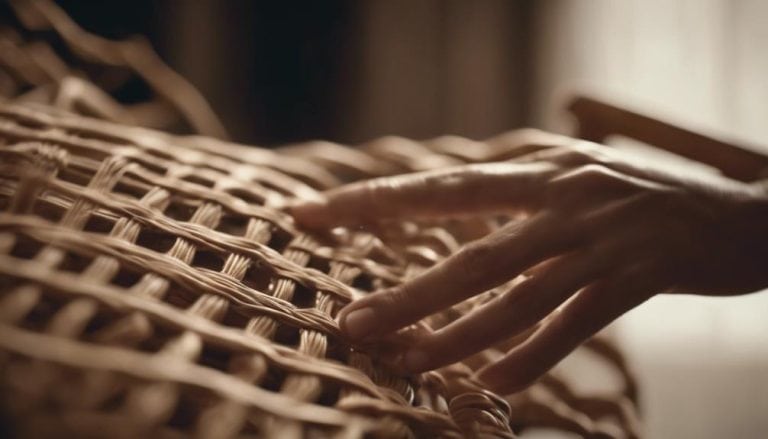Mastering the Craft of Danish Cord
Mastering the Craft of Danish Cord is like unraveling a hidden treasure trove of weaving mastery and design finesse. The intricate patterns and techniques involved in Danish Cord weaving can transform ordinary furniture into extraordinary art pieces.
As I delve into the nuances of this ancient craft, uncovering the secrets of weaving precision and structural integrity, a world of creativity and innovation unfolds. Join me on this journey as we unravel the mysteries of Danish Cord weaving and discover its endless possibilities for furniture enthusiasts and craftsmen alike.
Mastering the craft of Danish cord involves intricate weaving techniques. Practice and patience are key to achieving mastery of this traditional craft.
Key Takeaways
- Danish cord weaving embodies timeless elegance and quality craftsmanship.
- Precision weaving, tension control, and pattern variation are essential techniques.
- Maintenance practices ensure longevity: dust regularly, avoid direct sunlight, and clean spills promptly.
- Design inspirations: experiment with weaving techniques, embrace minimalism and blend artistry with functionality.
History of Danish Cord Weaving
Originating in Denmark in the early 20th century, Danish Cord Weaving is a traditional craft that intricately weaves paper cords around a wooden frame to provide both structural support and aesthetic allure to furniture pieces. This meticulous technique, also known as seat weaving, gained widespread recognition through the iconic Hans Wegner chairs, where the cord’s artistry elevated the design to unprecedented levels of sophistication. The Danish approach to weaving cord has become synonymous with quality craftsmanship and timeless elegance, setting a benchmark in furniture design.
The Danish Cord Weaving method hasn’t only stood the test of time but evolved with innovative patterns and variations, ensuring its relevance in contemporary furniture making. As one delves into the history of Danish Cord Weaving, it becomes evident that this traditional craft requires a delicate balance of precision and creativity to achieve flawless results. The legacy of Danish Cord Weaving continues to inspire artisans and designers worldwide, emphasizing the enduring appeal of this exquisite art form.
Key Techniques for Weaving Danish Cord
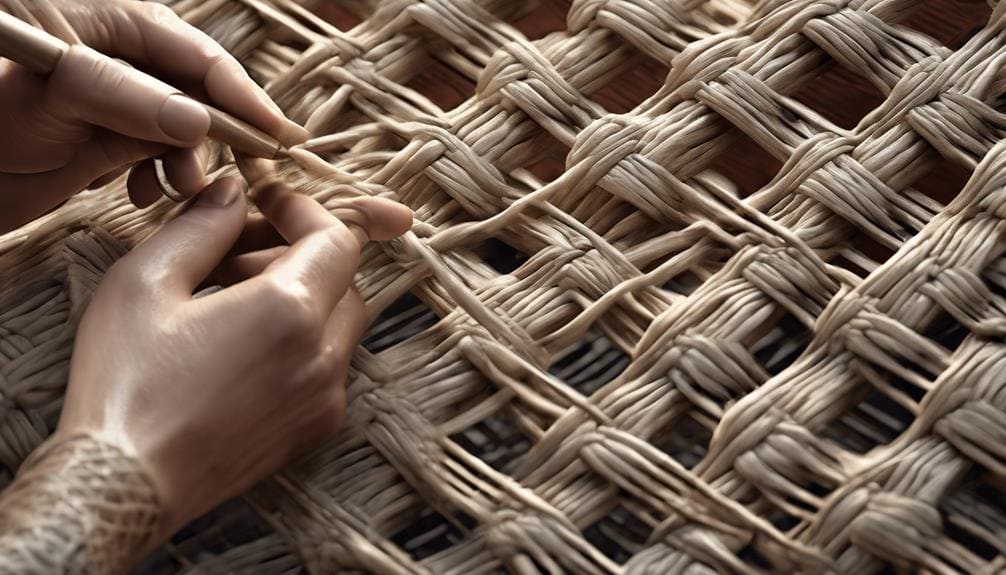
Danish Cord Weaving unlocks a world of intricate techniques that elevate furniture craftsmanship to unparalleled sophistication and durability. Mastering weaving techniques is essential for creating stunning chair seats and backs in unique furniture designs.
Here are key techniques for weaving Danish cord:
- Precision Weaving: Achieving intricate patterns requires meticulous attention to detail and precision in each weave to ensure a professional finish.
- Tension Control: Maintaining consistent tension while weaving is crucial for the final piece’s structural integrity and aesthetic appeal.
- Pattern Variation: Experimenting with different weaving patterns can add depth and character to furniture designs, making each piece a work of art.
Maintaining Danish Cord Furniture
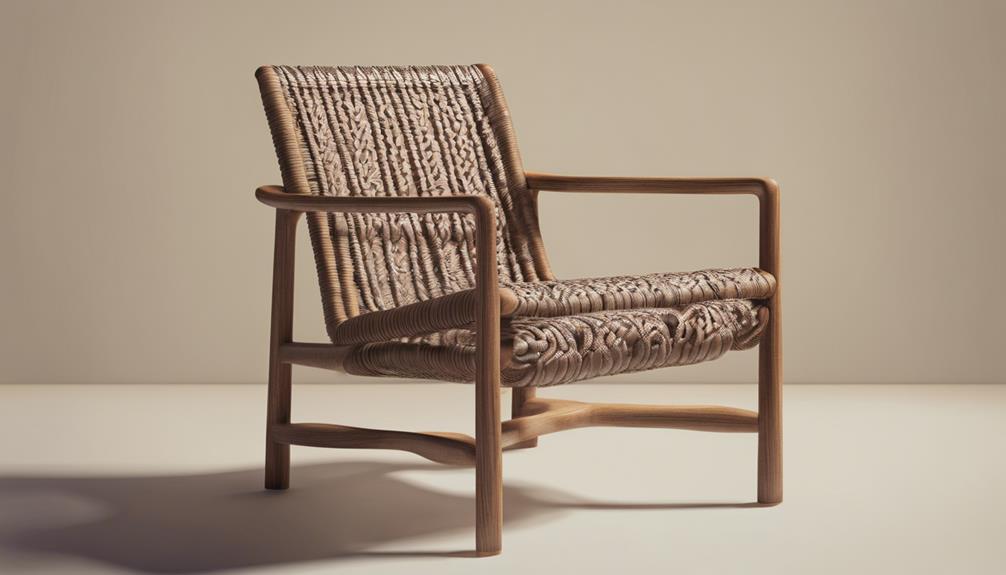
When caring for Danish cord furniture, meticulous maintenance practices are crucial to ensure its longevity and visual appeal. Regular dusting is imperative to prevent the accumulation of dirt and debris, which can weaken the cord fibers over time. Avoiding direct sunlight exposure is also essential, as it can cause fading and deterioration of the cord material. In the event of spills, it’s important to clean them promptly with a mild soap and a damp cloth, taking care not to apply excessive pressure that could damage the delicate weave.
Following care instructions meticulously is key to preserving the structural integrity of Danish cord furniture. Adhering to recommended cleaning techniques and maintenance routines ensures that your furniture retains its original beauty and functionality for years. Proper care enhances the aesthetic appeal of these unique designs and contributes to their longevity and durability. Embrace the responsibility of maintaining your Danish cord furniture to uphold its quality and allure.
Design Inspiration From Danish Cord
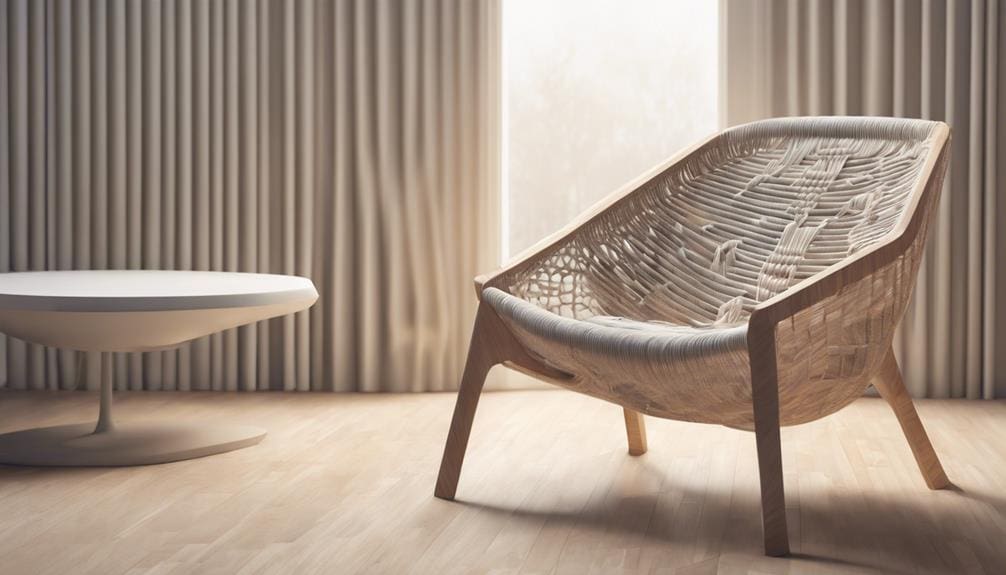
Exploring the intricate patterns and textures of Danish cord weaving unveils a world of design inspiration that transcends traditional furniture aesthetics. Weaving with Danish cord presents endless possibilities for creating unique chair seats that blend artistry with functionality. To derive maximum inspiration from the Danish cord, consider the following:
- Innovative Techniques: Experiment with weaving techniques to make the seat and back of chairs stand out as focal points in furniture design.
- Integrate Organic Elements: Incorporate natural textures and materials into your design to enhance the beauty of Danish cord furniture.
- Minimalist Approach: Embrace Scandinavian color palettes and minimalist artwork to complement the simplicity of Danish cord weaving, creating a harmonious balance in your design aesthetic.
Advanced Weaving Tips and Tricks
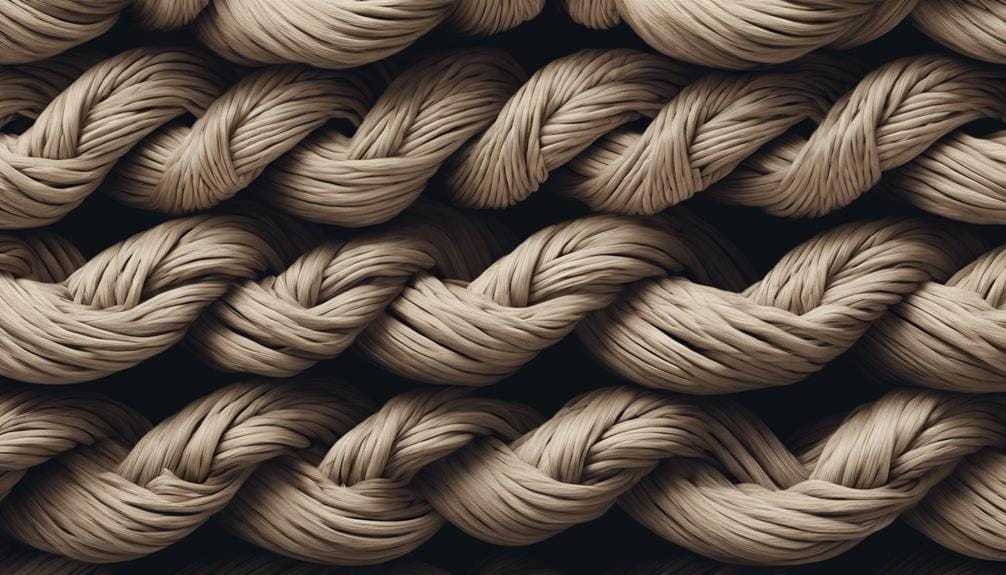
Embarking on a journey into advanced weaving unveils a tapestry of intricate patterns and techniques waiting to be mastered. To elevate your Danish cord craft to the next level, you must delve into advanced weaving techniques and tricks. HH Perkins offers a range of tools, such as the fid and weaving needle, which are essential for enhancing precision in weaving patterns.
Experimenting with different tension levels can create unique textures, perfect for mid-century modern furniture designs. Color plays a significant role in the aesthetic appeal of Danish cord furniture; blending shades of Danish paper can result in visually striking finishes. Mastering complex weaving patterns like twill, herringbone, hexagonal weaves, or chevron designs will set your creations apart.
Exploring Different Danish Cord Patterns
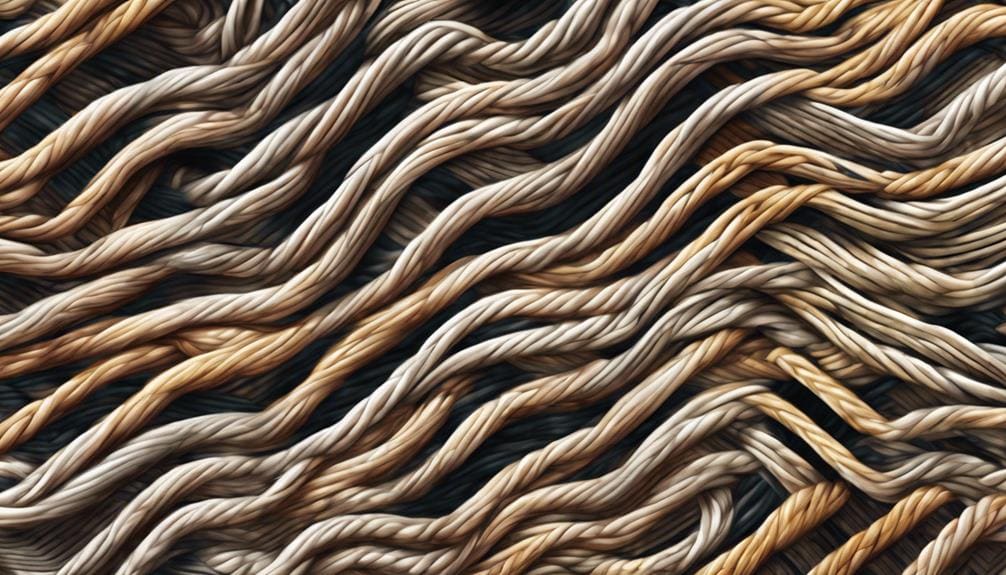
Delving into the intricate world of Danish cord-weaving patterns reveals a tapestry of design possibilities waiting to be explored. The options are vast and varied, offering a wide range of creative avenues to enhance chair designs and elevate the art of basket weaving.
- Checkerboard Pattern: This classic pattern creates a visually striking design by weaving the cords in a checkered layout, adding a touch of sophistication to the piece.
- Herringbone Design: By employing a herringbone pattern, you can achieve a unique and intricate look that adds depth and texture to the weaving, making it a standout feature.
- Twill Technique: Utilizing the twill weaving technique can produce a diagonal weave pattern that adds dynamism and movement to the Danish cord, enhancing the overall appeal of the furniture.
Exploring these and other techniques can transform a simple chair into a masterpiece, showcasing the artistry and skill that goes into weaving Danish cord around the rail.
Frequently Asked Questions
What Is the Nail Spacing for Danish Cord Weaving?
Proper tension in Danish cord weaving requires meticulous nail placement. The weaving technique thrives on consistent spacing, supporting the cord thickness. Attention to detail in finishing touches enhances durability and aesthetics, which is crucial for mastering this craft.
How Much Danish Cord Do I Need?
To determine the amount of Danish cord needed, measure the furniture’s length and width and consider the weaving pattern and density. Buy an extra cord to prevent errors. Seek online guidance for accurate estimates. Plan efficiently to reduce waste and ensure a smooth weaving process.
Is Danish Cord Comfortable?
Danish cord exudes comfort with its ergonomic design and durable material. Its smooth texture enhances the comfort level while distributing weight evenly. The customization options in colors add to its aesthetics, making it a stylish yet cozy choice.
What Is the Difference Between Laced and Unlaced Danish Paper Cord?
Laced Danish cord’s intricate patterns enhance aesthetics while requiring precise weaving techniques. Unlaced cord focuses on durability and functionality, with no visible patterns for structural support. Tension levels differ, catering to aesthetic preferences while ensuring durability in furniture weaving.
Conclusion
As I weave the intricate patterns of Danish Cord, I feel like a sculptor shaping a masterpiece from raw materials. Each twist and turn of the cord adds layers of depth and character to my furniture pieces, embodying the essence of Danish design excellence. Through dedication and attention to detail, I breathe life into each creation, transforming simple wood frames into timeless works of art that stand the test of time.


